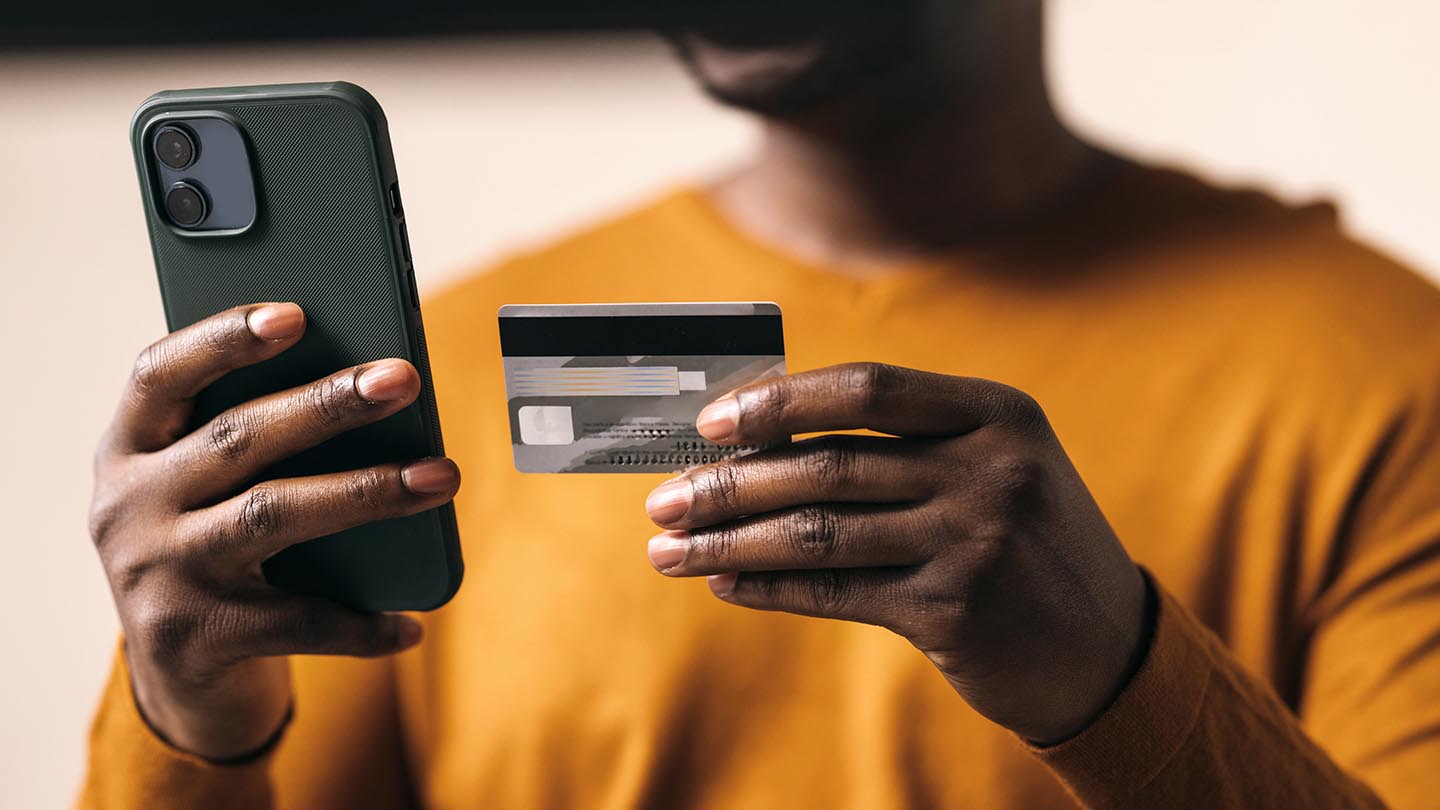From startups to legacy brands, you're making your mark. We're here to help.
-
Innovation Economy
Fueling the success of early-stage startups, venture-backed and high-growth companies.
-
Midsize Businesses
Keep your company growing with custom banking solutions for middle market businesses and specialized industries.
-
Large Corporations
Innovative banking solutions tailored to corporations and specialized industries.
-
Commercial Real Estate
Capitalize on opportunities and prepare for challenges throughout the real estate cycle.
-
Community Impact Banking
When our communities succeed, we all succeed. Local businesses, organizations and community institutions need capital, expertise and connections to thrive.
-
International Banking
Power your business' global growth and operations at every stage.
Key Links
Prepare for future growth with customized loan services, succession planning and capital for business equipment.
-
Asset Based Lending
Enhance your liquidity and gain the flexibility to capitalize on growth opportunities.
-
Equipment Financing
Maximize working capital with flexible equipment and technology financing.
-
Trade & Working Capital
Experience our market-leading supply chain finance solutions that help buyers and suppliers meet their working capital, risk mitigation and cash flow objectives.
-
Syndicated Financing
Leverage customized loan syndication services from a dedicated resource.
-
Commercial Real Estate
Capitalize on opportunities and prepare for challenges throughout the real estate cycle.
-
Employee Stock Ownership Plans
Plan for your business’s future—and your employees’ futures too—with objective advice and financing.
Key Links
Serving the world's largest corporate clients and institutional investors, we support the entire investment cycle with market-leading research, analytics, execution and investor services.
-
Institutional Investors
Putting your long-tenured investment teams on the line to earn the trust of institutional investors.
-
Markets
Direct access to market leading liquidity harnessed through world-class research, tools, data and analytics.
-
Prime Services
Helping hedge funds, asset managers and institutional investors meet the demands of a rapidly evolving market.
-
Global Research
Leveraging cutting-edge technology and innovative tools to bring clients industry-leading analysis and investment advice.
-
Securities Services Solutions
Helping institutional investors, traditional and alternative asset and fund managers, broker dealers and equity issuers meet the demands of changing markets.
Key Links
Providing investment banking solutions, including mergers and acquisitions, capital raising and risk management, for a broad range of corporations, institutions and governments.
-
Center for Carbon Transition
J.P. Morgan’s center of excellence that provides clients the data and firmwide expertise needed to navigate the challenges of transitioning to a low-carbon future.
-
Corporate Finance Advisory
Corporate Finance Advisory (“CFA”) is a global, multi-disciplinary solutions team specializing in structured M&A and capital markets. Learn more.
-
Development Finance Institution
Financing opportunities with anticipated development impact in emerging economies.
-
Sustainable Solutions
Offering ESG-related advisory and coordinating the firm's EMEA coverage of clients in emerging green economy sectors.
-
Mergers and Acquisitions
Bespoke M&A solutions on a global scale.
-
Capital Markets
Holistic coverage across capital markets.
Your partner for commerce, receivables, cross-currency, working capital, blockchain, liquidity and more.
Key Links
A uniquely elevated private banking experience shaped around you.
-
Banking
We have extensive personal and business banking resources that are fine-tuned to your specific needs.
-
Investing
We deliver tailored investing guidance and access to unique investment opportunities from world-class specialists.
-
Lending
We take a strategic approach to lending, working with you to craft the right financing solutions matched to your goals.
-
Planning
No matter where you are in your life, or how complex your needs might be, we’re ready to provide a tailored approach to helping your reach your goals.
Whether you want to invest on your own or work with an advisor to design a personalized investment strategy, we have opportunities for every investor.
-
Invest on your own
Unlimited $0 commission-free online stock, ETF and options trades with access to powerful tools to research, trade and manage your investments.
-
Work with our advisors
When you work with our advisors, you'll get a personalized financial strategy and investment portfolio built around your unique goals-backed by our industry-leading expertise.
-
Expertise for Substantial Wealth
Our Wealth Advisors & Wealth Partners leverage their experience and robust firm resources to deliver highly-personalized, comprehensive solutions across Banking, Lending, Investing, and Wealth Planning.
For Companies and Institutions
-
Commercial Banking
From startups to legacy brands, you're making your mark. We're here to help.
-
Institutional Investing
Serving the world's largest corporate clients and institutional investors, we support the entire investment cycle with market-leading research, analytics, execution and investor services.
-
Payments
Your partner for commerce, receivables, cross-currency, working capital, blockchain, liquidity and more.
-
Credit & Financing
Prepare for future growth with customized loan services, succession planning and capital for business equipment.
-
Investment Banking
Providing investment banking solutions, including mergers and acquisitions, capital raising and risk management, for a broad range of corporations, institutions and governments.
For Individuals
-
Private Bank
A uniquely elevated private banking experience shaped around you.
-
Wealth Management
Whether you want to invest on you own or work with an advisor to design a personalized investment strategy, we have opportunities for every investor.
Explore a variety of insights.
Key Links
Insights by Topic
Explore a variety of insights organized by different topics.
Key Links
Insights by Type
Explore a variety of insights organized by different types of content and media.
Key Links
We aim to be the most respected financial services firm in the world, serving corporations and individuals in more than 100 countries.
Key Links
- Insights
- Treasury
- Digital Solutions
- Looking ahead toward payments modernization

Podcast with Takis Georgakopoulos
[MUSIC PLAYING]
You're listening to a PYMNTS Original Podcast.
Karen: Hi, Takis, thanks for joining me today. I'm looking forward to our discussion which will reflect on the conversations I had with many of your colleagues throughout 2020 about the digital transformation of the treasury and, more importantly, what's in store for 2021. So thank you so much for making the time.
Takis: Thank you, Karen, for inviting me.
Karen: OK, so let's talk about that transformation. How has the digital transformation of the treasury transformed the role of the corporate treasurer?
Takis: So I think we've seen this trend which has been going on for a while which is a trend towards digitization. And it is all about how do you have visibility on your accounts, your cash positions around the world? How do you interact with your banks in a more digital way, opening accounts, using digital signatures, et cetera? How do you transform your business, because we saw that with the pandemic, but it was a trend even before that.
People are looking for additional alternative channels through which they can interact with their suppliers, their clients, the small businesses, and the consumers that they do business with and try to do that in a more digital and a more direct way. So this was a trend for a number of years now, what we saw in 2020 was a dramatic acceleration of that trend. And that puts treasury in a position where they have to work very, very closely with the business because this is not just about treasury trying to make money movements more efficient, it is about how the whole business operates and what are the priorities of the business has and what is the agility with which they can enter new markets, new customer segments, and new channels.
Karen: It seems that it's made that role certainly much more strategic and much more a driver of the business. I think the thing that I have observed over the course of 2020, though, is the conversation about business payments now being about the experience, not just about the efficiencies of going digital. And so I'm curious, given that focus on the experience, and you touched on this a little bit, who's at the table now when it comes to making decisions about that digital transformation?
Takis: So I think for some of the-- it's a digital first or digital natives, that's a big business decision and a big business priority, and they're the ones that are driving that as part of the overall strategy. But that is increasingly happening, also, in the B2B world, as I mentioned, because people are trying to find new channels and new ways and more efficient ways to do business, and they're trying to compete with e-commerce, with fintech, with marketplaces, et cetera.
So everyone is kind of converging towards the same model. And you saw during COVID, how the companies that were ready for that journey flourished and did really well during the pandemic whereas many others either struggled will have to very quickly figure out how to adapt.
Karen: I want to talk about the profile of those businesses in a minute, but I want to go back to this focus on the business experience and the business drivers that digital transformation can enable. Do you think that's made it easier to get buy-in to invest in the digital journey?
Takis: Yeah, I think they realize that they don't have much of a choice. Whether you run a global business and you need to make what we had with the situation with a client in February, they need to make payroll in Wuhan. If any of that is not electronic, you just won't be able to do it. The resiliency of your business is not going to be the same. So I think making that journey became a necessity. And I think that's what a lot of our clients saw and that's what's prompted them to make the investment. It's not a nice to have, it is necessary for survival and for being able to maintain and grow their market share.
Karen: Clearly, the pandemic has put a fine point on the need to take these digital journeys. But what types of businesses, in particular, have you seen really adapt very quickly to a more digital business payments environment? What's the profile of the early adopter?
Takis: Well, the early adopter were the companies that were ready for that and were geared from that from the beginning. And I mentioned e-commerce, tech companies, marketplaces, these companies tend to be much newer in terms of their history. They tend to have a very strong technology background, they're API first, they're cloud first, they're digital. And I think for them, there was no change that they needed to make because they were already there.
The next one I would say is companies in the consumer space that before might rely on intermediaries or might rely on physical stores. They were the ones that had the highest level of urgency in making the transition so that they're able to work directly with their consumer and their suppliers. On the supplier side, because they had to make sure that their suppliers continue to operate, and on the customer side because that intermediary that they were going through before might not exist in the future. And the ability to interact directly with clients became critical.
So they, I think, were the second fastest adopters, and they very quickly tried to change their business model. For everyone else, it was less a question about changing their model, the companies that only do B2B, it was more about how do you interact with your other business customers and with your banks in a more efficient way. And that's where, as I mentioned, digital onboarding, digital signatures, digital money exchange, and information exchange became quite critical.
And, again, this was not new. It was not like a treasurer woke up one morning and said, I need to do that, it just it moved from number, I don't know, 5 or 10 on the priority list, suddenly to number one on the priority list.
Karen: Are you finding, though, that all businesses, regardless of what their end customer needs are, are using this digital transformation to reexamine their business models? I mean, there are many things that payments can enable that might provide different business opportunities in the future.
Takis: Yeah, I would say there is an internal and external answer. Internally, companies are using that opportunity to simplify their own operations and streamline their own operations, meaning being able to see where their cash is, what is the structure of their subsidiaries, how do you lend to those subsidiaries, what are your currency positions, et cetera, and being able to do that with better data, better analytics, better account structures, and do that real time is something that we need, not just for COVID, but to be able to address more efficiently the operations of your business.
Externally, you also realize, and they also realize, that they need to be more nimble in how they interact with their clients. So that's why they're also looking at their business models. And they're looking at the success of the companies that were already there and it's well-known names. They've done extraordinarily well, and we see it in their market share and their sales volumes and in their hiring and their market cap. And that kind of creates the North Star that everyone else is trying to replicate.
Karen: I want to talk a little bit about JP Morgan and your own digital transformation. Certainly, the digital transformation of your wholesale team has been active for quite some time. How would you characterize your own readiness to help or navigate the pandemic as a result of the investments you've made over the years?
Takis: Yeah, so I would say, well, when we think about it, first of all, that digital transformation was always our core belief because we know that payments are changing in very exciting ways, but also in unpredictable ways, in different ways around the world. And therefore, one of the core components of being able to compete in that space is the technology and the resiliency that supports everything that you do.
So from our side, wholesale payments is a large part of the $12 billion that we spend as a bank every year with a focus on automation, agility, and scalability. And we move $7 trillion a day with an extremely high accuracy. It's about the net of every 100 million transactions. We use the very big data that we collect. We move something one out of every $4 that changes hands anywhere in the world. And we use that information to keep our customers safe, whether it is fraud, sanctions, or other issues that arise in payments.
And then, we are moving our whole infrastructure to be cloud native, API-based, and based on a set of microservices that serve particular needs and can be put together for what different customer segments are looking for. And then, finally, we continue to work very actively with fintechs. We've done two acquisitions and more than a dozen partnerships over the last couple of years to help accelerate that trajectory. So I would say we are never done, but we have a complete product set, and we have the underlying technology that allows our clients to connect with us in flexible and efficient ways.
Karen: It seems as though the nature of the pandemic, certainly, it happened to the world all at once. And as you pointed out, there were a number of very critical decisions that needed to be made by businesses to pivot. It sounds like because of the investments that you've made over the years, you were able to help those businesses navigate that pivot in a much more seamless, perhaps even faster, way. Is that a fair characterization?
Takis: I wouldn't say it was easy, right? And the first thing when the pandemic started is how do we keep our people safe.
Karen: Right.
Takis: And some of it is easy because 80% of the people moved to work-from-home very, very quickly. And I'm very proud of the fact that we did that volume spike at unprecedented levels and we were able to maintain business resilience, et cetera, not just JP Morgan, but for the whole of the banking industry and the vast majority of our clients. So I think the whole system proved its resiliency.
But in our case, we have the extra complexity of our check processing operations which employ about three-and-a-half thousand people in places like Brooklyn and Chicago where people still had to come to work every day. So our first priority was how to change the business model, keep people safe, give them access to masks, food, create the appropriate separation, the cleaning of the facilities, et cetera, so that these people can come to work every day and process the payments that are important for our clients and for consumers, their payroll, and the applications that we do on behalf of the government, et cetera. So be able to do that in a seamless way. So, for me, that was kind of priority number one.
Priority number two was to be able to move that $7 trillion every day without any interruptions which, by the way, that number rose to close with 10 trillion in March before it kind of went back again. And then, the third one is to work with clients on digital treasury transformation, on business model transformation, et cetera. So I feel really good about what we've done.
And the one comment that I would make about the preparedness is also the support that we provided to a lot of the tech companies and e-commerce companies, especially through our APIs and through products like Real-time Payments which enabled them to make peer-to-peer or business-to-consumer transactions in almost real-time. And we ended up processing about 400,000 payments or more every single day in real-time on behalf of our clients.
Karen: Wow. Takis, have you changed any of your areas of priority given what you've observed about the shift to digital on the part of businesses generally over the course of 2020? It isn't as if these digital shifts are temporary, consumers and businesses both, I think, like a digital first way of doing business. And so I'm curious whether that has affected any of your plans or roadmapping for the future?
Takis: Not really. So our business plan and our overall view and strategy of the business was towards digital anywhere, anytime, anyplace in the world, any method of payment 24 by 7. So that's a journey we started three years ago, and we continue to progress towards that vision. The one thing that did change is the speed with which we were able to make some of those decisions and the speed with which we were able to implement some of those decisions and the willingness for our clients to partner with us as we made that change.
A great example of that is Virtual Assistant. We rolled out the Virtual Assistant, I think, at the beginning of this year. And the adoption was kind of low because people were used to calling their service rep, and they were used to that, therefore, why change it. Suddenly, COVID hits, everyone starts working from home, call waiting lines become a little bit longer. Suddenly, that virtual assistant becomes much more interesting.
And so we went from a couple of thousand users to a couple of 100,000 users literally in a matter of weeks. Adopting digital signatures requires changing the customer workflow. Again, it's something that everyone kind of liked, but no one focused on as much. Suddenly, that became a big priority. Moving away from paper, that's kind of a unique US phenomenon. But in the US, something like 40% of payments still happen by checks and nothing focuses the mind more than having the risk that everything will be closed. The post office will not deliver the mail, et cetera. And that kind of brought that move from paper to electronic payments much more in the forefront.
So I would say no major change in the strategy, but the adoption and the speed with which some of these changes are happening has accelerated quite dramatically.
Karen: I wanted to ask you a question about fintechs and specifically this one. Certainly, there has been so much discussion and evidence of the rise of these as-a-service platforms over the course of 2020. And with that has risen a number of conversations about the role of the banks in driving innovation forward and their ability to compete effectively with fintechs. How is the conversation inside of JP Morgan changed, if at all, about the role of the bank over the next decade in competing with, collaborating with fintechs?
Takis: Yeah. So I will speak mostly from my perspective. Because, obviously, depending on which side of the business you're sitting, you may have slightly different points of view. But from my side of the business, fintechs are not just competitors, they are also great clients for our payments and for our acquiring business. We help them move money. We hold their other bank accounts. We help them accept payments, et cetera.
And the reason why they do that with us is we have the geographic breadth, we have the scale, we have the control infrastructure, and we understand the regulatory environment in every place and every product in every country where we do business. So we help them move quickly.
The second reason or the second comment is that when you look at those fintechs, they do have compelling value proposition. They solve real customer pain points. They help clients grow their businesses. And we as banks, historically, have not been that great at that. So I think we need to learn from that, and we need to challenge ourselves, and we need to deliver with the same level of customer obsession and customer focus as they do.
And then the last comment that I would make is that we many times, and I mentioned the 12 fintech partnerships that we have, we often partner with them. We think they can add a lot of value to our business, a lot of value to our ecosystem. That's why we partnered more recently with Taulia in trade finance. Their great at onboarding small suppliers. We can spend two years going and creating it or we can offer it to our clients today, and that's what we choose to do.
So their competitors, their clients, they raise the bar. That's great. They raise the competition. And they create more work for us to do, but that's how it should be. So we see it as a challenge and, also, as a great opportunity for us. And I think the one thing that we've changed about how we approach the world over the last couple of years is to make sure that we are not looking for perfect solutions.
My view is that, first of all, they generally don't exist. And then second, even if they do, you can't design them from your office. So I'm pushing the team, and we're working with my management team much more towards identifying real client problem, work with the client, test, learn, iterate, improve, and then once you are ready, go out and commercialize. And I think that will allow us to more quickly address what is a very changing environment.
And we've seen what happens when banks don't do that, and you can look at other parts of the world. You can look at China, for example, where consumer and small business payments is completely ruled by platforms. And we want to avoid getting to the same place. And I think we can get there. We have some unique strengths, but we also have a lot of work to do.
Karen: Was that a difficult shift to make inside of JP Morgan?
Takis: For my business, not really because, again, we've been working with these clients. I don't want to sound complacent. But we have been working with those clients for a long time now. And what they do is they raise the bar. When you want to work with an e-commerce marketplace with tens of millions of sellers or a billion of clients, the APIs, the SLAs that they're looking for, the resilience of your system, how your sub-accounting infrastructure works, how quickly you can provide real-time data, being able to support 24 by 7 payments without any interruptions, they raise the bar.
And we see that there's a great challenge on where our technology needs to be in order to compete. So there, I think, no change, we just are pushing our technology and our thinking to deliver on that. On the front end and the interaction with the clients, we are learning from them. We have a lot to learn, a lot to do.
Karen: When you think back to the journey that you started several years ago and all the decisions that you made then to put the foundation in place that is driving the transformation forward for JP Morgan as well as your clients, is there one significant decision, one big decision that you made then that you believe was foundational to the progress that you've made to-date and, certainly, foundational to the progress you'll make going forward?
Takis: Probably, the biggest decision that we made with the support of Jamie and Daniel Pinto, the COO of the Corporate and Investment Bank, was the decision to invest quite heavily in technology in modernizing our platform. Because at the end of the day, if your technology is not agile, if your APIs don't work, if your onboarding doesn't work, there's very little innovation that you can do. And unfortunately, you cannot do that on a flat budget. You need to be able to invest and have the mentality that you're willing to invest whatever it takes to get you there.
Because on one hand, you need to maintain your existing platforms because that's what supports clients today and moves trillions of dollars every day. And at the same time, you need to change your infrastructure and support it for the future. And you can't do both of those things unless you have the right tech team, the right tech budget, the willingness to invest, and the very close collaboration between sales, product, and technology.
I think that's the one thing that we got right three or four years ago. And I think that's what we see the benefits of today. And as I said, we're not done, still have a lot of work to do. But at least we have the foundation that allows us to innovate at a pace that's required.
Karen: What excites you the most about 2021 as you reflect on 2020 and all that we've learned and all that we've experienced? 2021, what do you see? What are you excited about?
Takis: Yeah. So first of all, I'm excited about a lot of things. I think payments is probably the most exciting space within banking, the largest amount of change, which means the largest amount of opportunity to get it right and downside if you don't get it right. So I'm not going to talk about technology since I already covered that a couple of times. And we have three big priorities in my business.
So one is thinking about how we deliver for our different customer segments. And while we have a strategy for each customer segment, the two that I'm most excited about is e-commerce and healthcare. Healthcare because we acquired InstaMed and we've integrated their product with our payment capabilities. And we think there is a tremendous amount of opportunity to take out inefficiencies and paper out of the health system.
And e-commerce because this is the place where merchant acquiring and payments come together. Delivering to clients one solution, one API, all pay and payout options anywhere in the world, do that real-time, and support it by individual wallets for each seller, buyer, driver, or host or whatever it is that the marketplace does, so that we can add value to the ecosystem and allow them to optimize the marketplace and provide options for the participants. That, to me, is an extremely exciting space. No other bank can do that because no other bank has an integrated merchant acquiring business. So the challenge is for us to deliver on that vision.
The second area is small business. And as you know, we have an incredibly strong franchise within Chase having millions of small businesses. And the question is how do you bring that together without acquiring in these capabilities. We launched Chase Complete Banking a couple of months ago. And we will continue to bring new products to the market in 2021. Once again, part of the same digital journey, digital accounts opening, digital interaction, and digital onboarding and bringing together all of our products for the benefit of our clients.
And then the third area that I'm more excited about than I've ever been is all of the work that we are doing around R&D. And we put all of that together under a brand called Kinexys, in a business called Kinexys, where we are putting together all that we are doing around launching digital balances and offering our platform as a service within what I would say three major initiatives which I believe that we will commercialize, hopefully, in 2021.
The first one is what was known as Project Ubin, which is the work that we are doing in Singapore with Temasek DBS and in close partnership with the Monetary Authority of Singapore, in creating the first multi-currency blockchain-based digital clearing system in the world. If we are able to do that, that will be a game changer. It would be the first of its kind. And we think it will serve as a model for every other country that's looking at similar things.
The second is we are live with our first major client using Kinexys Digital Payments, and we are looking for more opportunities to deploy the Kinexys Digital Payments to support business-to-business 24 by 7 frictionless money movement. And then the third is we built a couple of years ago this network called-- it used to be called IIN, now it's called Liink, which is a blockchain network that's bringing together 400 of the world's largest banks. And what we're trying to do there is thinking about how we can eliminate inefficiencies in the industry.
We've come up with a bunch of ideas that we think can reduce 100 million or more inefficiencies in the industry. And there are two in particular that we are trying to commercialize now. One on how to reduce the cost for companies and for e-commerce players and banks, reduce the cost of sending money to a new beneficiary for the first time and making sure that you have all of the information about that beneficiary correct. Sounds kind of very mundane and somewhat esoteric, but companies spend hundreds of millions of dollars collectively in doing that every year. We think using that network, we can get very close to eliminating a large portion of that cost.
And then the second one is I mentioned check processing. We cannot eliminate if people want to use checks, but at least we can digitally connect the banks that issue checks with the providers, with providers, that process those checks through a blockchain network so that the information changes hands electronically and these checks never have to be printed again.
So these are just some of the ideas we've been at them we've been working on them for a while, but both the technology and the conversations with our partners have matured in a way that I believe that at least some of those will become commercially viable and real in 2021.
Karen: It sounds like you're going to have a busy year.
Takis: Yeah.
Karen: Takis, thank you so much for your time. I enjoyed the conversation. All the best to you in the new year.
Takis: Thank you very much. Nice talking to you.
[MUSIC PLAYING]
You've been listening to a PYMNTS Original Podcast. For more just like this one, you can visit PYMNTS.com or check us out on your favorite listening app.
[MUSIC PLAYING]
J.P. Morgan’s Global Head of Wholesale Payments, Takis Georgakopoulos and Karen Webster, CEO of PYMNTS.com, discuss the state of treasury’s digital transformation and the outlook for the future. This podcast was originally published on PYMNTS.com.
Highlights
- Businesses have long been digitizing their treasury departments for more efficient money movement, but the global pandemic increased the urgency, speed and scope of those transformations taking place. Now treasurers have a renewed focus that reaches beyond their department across the entire business operation.
- From greater agility into new markets, customer segments and channels to adopting new business models, treasurers are quickly becoming strategic business leaders within their firms. And those who embrace the digital transformation are making major investments in cloud infrastructure, application programming interfaces (APIs), and interoperability between their treasury systems.
- Banks must also embrace their own digital transformation in order to effectively support their treasurer clients’ throughout the journey. For example, about 80 percent of J.P. Morgan’s workforce moved to remote environments and continued to process nearly $7 trillion in transaction per day and support their clients’ business transformations without disruption. In addition to the people, much of this success is attributed to the digital strategies in place long before the pandemic.
- For both businesses and their banking partners, digital-first strategies and payments innovation will last long beyond the pandemic as a strategic pillar that enables long-term growth and competitiveness.
Contributors

Takis Georgakopoulos
Global Head of Payments, J.P. Morgan
Listen
Hide
Listen
Hide
This material was prepared exclusively for the benefit and internal use of the JPMC client or prospect to whom it is directly addressed (including such entity’s subsidiaries, the “Company”) in order to assist the Company in evaluating a possible transaction(s) and does not carry any right of disclosure to any other party. In preparing these materials, we have relied upon and assumed, without independent verification, the accuracy and completeness of all information available from public sources or which was provided to us by or on behalf of the Company or which was otherwise reviewed by us. This material is for discussion purposes only and is incomplete without reference to the other briefings provided by JPMC. Neither this material nor any of its contents may be disclosed or used for any other purpose without the prior written consent of JPMC.
J.P.Morgan, JPMorgan, JPMorgan Chase, Chase and InstaMed are marketing names for certain businesses of JPMorgan Chase & Co. and its subsidiaries worldwide (collectively, “JPMC”). Products or services may be marketed and/or provided by commercial banks such as JPMorgan Chase Bank, N.A., securities or other non-banking affiliates or other JPMC entities. JPMC contact persons may be employees or officers of any of the foregoing entities and the terms “J.P.Morgan”, “JPMorgan”, “JPMorgan Chase” “Chase” and “InstaMed” if and as used herein include as applicable all such employees or officers and/or entities irrespective of marketing name(s) used. Nothing in this material is a solicitation by JPMC of any product or service which would be unlawful under applicable laws or regulations.
Investments or strategies discussed herein may not be suitable for all investors. Neither JPMC nor any of its directors, officers, employees or agents shall incur in any responsibility or liability whatsoever to the Company or any other party with respect to the contents of any matters referred herein, or discussed as a result of, this material. This material is not intended to provide, and should not be relied on for, accounting, legal or tax advice or investment recommendations. Please consult your own tax, legal, accounting or investment advisor concerning such matters.
Not all products and services are available in all geographic areas. Eligibility for particular products and services is subject to final determination by JPMC and or its affiliates/subsidiaries. This material does not constitute a commitment by any JPMC entity to extend or arrange credit or to provide any other products or services and JPMC reserves the right to withdraw at any time. All services are subject to applicable laws, regulations, and applicable approvals and notifications. The Company should examine the specific restrictions and limitations under the laws of its own jurisdiction that may be applicable to the Company due to its nature or to the products and services referred herein.
Notwithstanding anything to the contrary, the statements in this material are not intended to be legally binding. Any products, services, terms or other matters described herein (other than in respect of confidentiality) are subject to the terms of separate legally binding documentation and/or are subject to change without notice.
Changes to Interbank Offered Rates (IBORs) and other benchmark rates: Certain interest rate benchmarks are, or may in the future become, subject to ongoing international, national and other regulatory guidance, reform and proposals for reform.
For more information, please consult: https://www.jpmorgan.com/global/disclosures/interbank_offered_rates
JPMorgan Chase Bank, N.A. Member FDIC.
JPMorgan Chase Bank, N.A., organized under the laws of U.S.A. with limited liability.
Related insights

Treasury
Mar 25, 2025
Learn what payment gateways are, how they work and how they serve you and your customers.

Treasury
Enhancing your treasury operations with a modern tech stack
Mar 18, 2025
Discover how a well-structured tech stack can enhance your treasury operations, improve financial management, drive strategic decisions and eliminate the hidden costs of tech debt.

Treasury
Atlas overcomes financing challenges to streamline energy operations
Mar 03, 2025
Here’s how J.P. Morgan Payments helped tackle Atlas’ escrow-DDA dilemma with sustainable finance solutions.

Treasury
Digital payments: A strategic guide to electronic funds transfers
Feb 28, 2025
Compare ACH, wire and real-time payment operations that can help optimize your treasury. Learn more about settlement speeds, costs and capabilities across payment types.

Treasury
The ins and outs of cash forecasting: From daily monitoring to strategic planning
Feb 28, 2025
Discover how strong cash forecasting bridges your company’s daily treasury operations with its long-term financial strategy.

Treasury
Optimize your cash flow: Understanding DSO and AR turnover metrics
Feb 26, 2025
Use days sales outstanding (DSO) and accounts receivable (AR) turnover metrics to evaluate and improve your collection efficiency. Transform insights into faster payment cycles.

Treasury
How Siemens Treasury redefines financial operations through innovation and technology
Feb 25, 2025
J.P. Morgan Payments powers Siemens Treasury’s transformation from a support function to strategic business enabler.

Treasury
Feb 20, 2025
Learn what accounts receivable are and why they are important.
You're now leaving J.P. Morgan
J.P. Morgan’s website and/or mobile terms, privacy and security policies don’t apply to the site or app you're about to visit. Please review its terms, privacy and security policies to see how they apply to you. J.P. Morgan isn’t responsible for (and doesn’t provide) any products, services or content at this third-party site or app, except for products and services that explicitly carry the J.P. Morgan name.